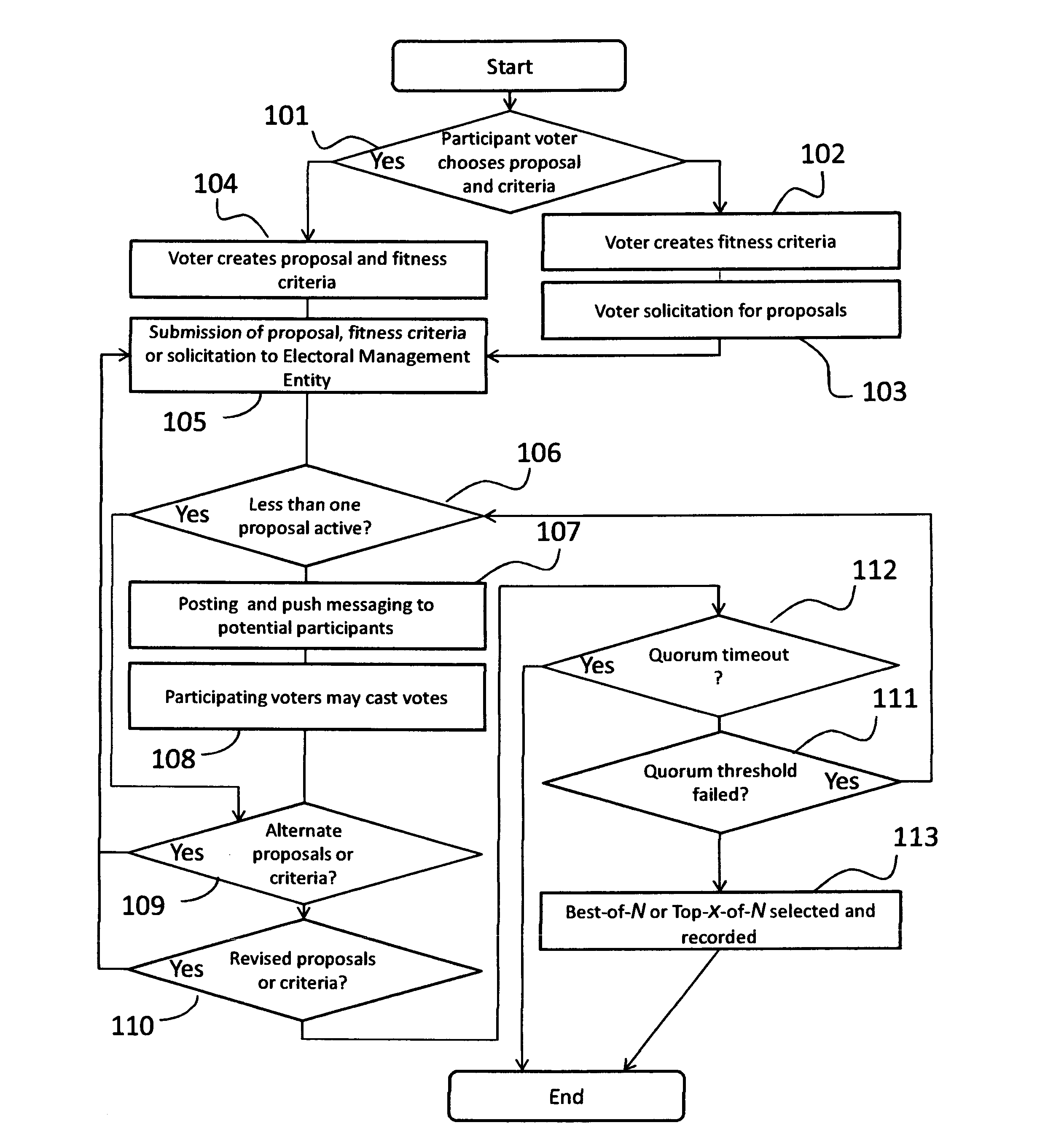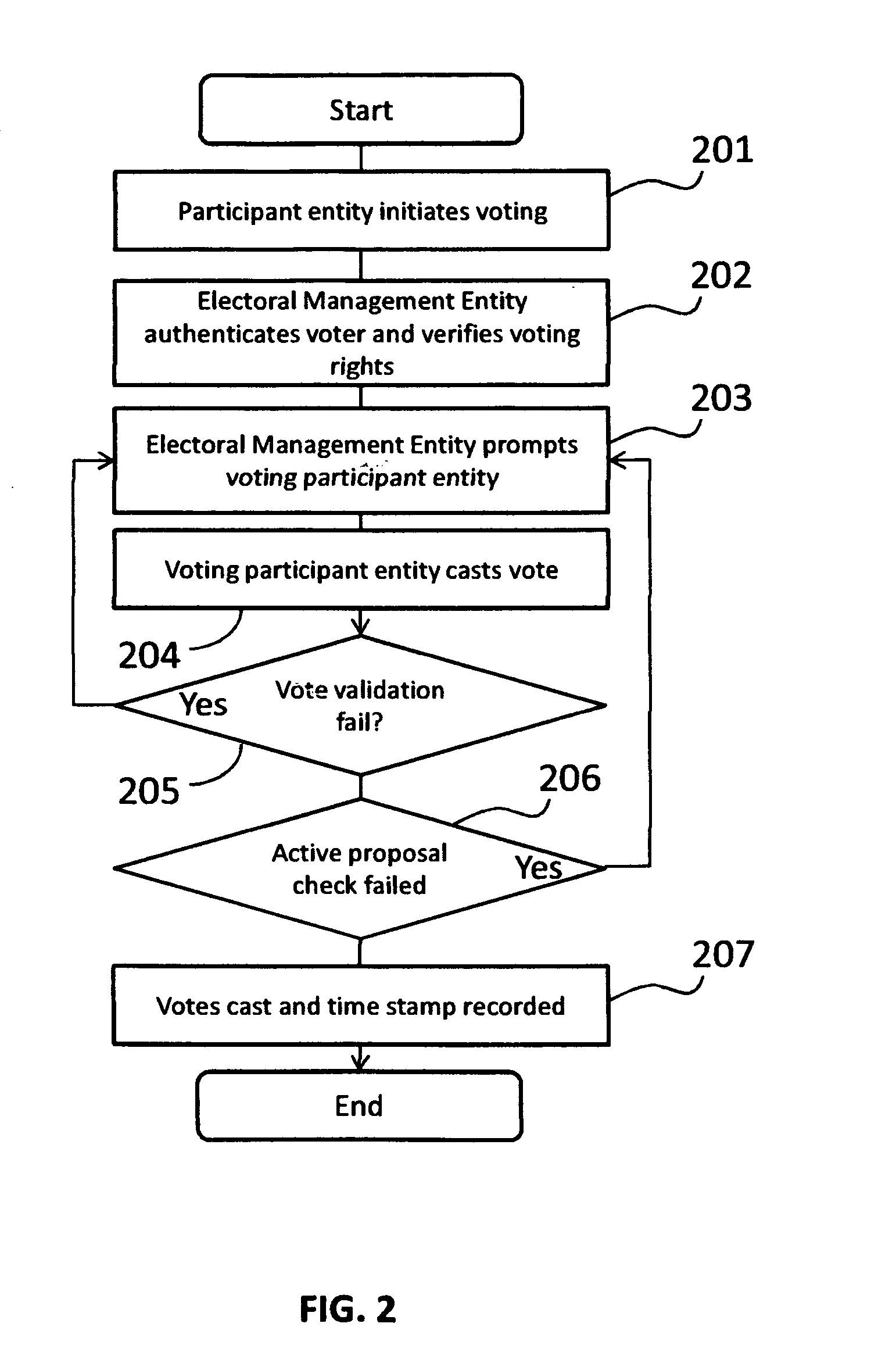System, process, or method for the use of cross-inhibitive-voting in collaborative societal decision making within social networks
a social network and voting system technology, applied in the field of social networking, can solve the problems of the decline in the weight of those votes cast, and achieve the effect of more effective electoral processes and complete representation of preferen
- Summary
- Abstract
- Description
- Claims
- Application Information
AI Technical Summary
Benefits of technology
Problems solved by technology
Method used
Image
Examples
Embodiment Construction
[0032]It will be appreciated that the system, process or method may vary as to configuration and as to details of the constituent elements of the present invention, and that the system, process, or method may vary as to the specific steps and sequence, without departing from the basic concepts as disclosed herein.
SPECIFICATION BACKGROUND
[0033]Social networks in the context of the present invention described herein, are any kind of social relationships or associations between a plurality of people, groups of people, companies, or programmable agent apparatus, collectively referred to as associated entities, and which may be represented by a plurality of nodes connected by a plurality of labeled edges through which information may flow, and which may employ a device, such as a computer, smart phone, interactive television or personal communications or computing device, to establish and maintain a presence in a social network. In addition, the term social network as used herein shall i...
PUM
 Login to View More
Login to View More Abstract
Description
Claims
Application Information
 Login to View More
Login to View More - R&D
- Intellectual Property
- Life Sciences
- Materials
- Tech Scout
- Unparalleled Data Quality
- Higher Quality Content
- 60% Fewer Hallucinations
Browse by: Latest US Patents, China's latest patents, Technical Efficacy Thesaurus, Application Domain, Technology Topic, Popular Technical Reports.
© 2025 PatSnap. All rights reserved.Legal|Privacy policy|Modern Slavery Act Transparency Statement|Sitemap|About US| Contact US: help@patsnap.com



